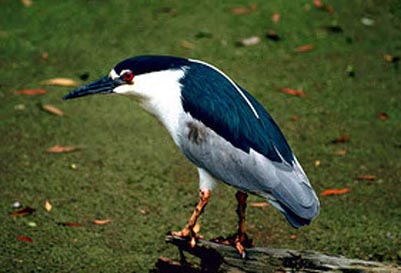Colonial Waterbirds
|
Double-crested Cormorant,
Herring Gull, Ring-billed Gull, Black Tern, Common Tern, Caspian Tern, Black-crowned Night Heron, Cattle Egret |
Colonial waterbirds are limited to only a handful of Vermont atlas blocks. Although Atlas data exhibit major distributional changes for this group of species, abundance surveys are needed to determine population fluctuations. On balance, colonial waterbirds fared well in Vermont between the first and second Atlases.
- Change in status of many waterbird species not adequately reflected in atlas data.Some colonial waterbird species breed only within blocks not surveyed during both atlases (non-Priority 1 blocks).
- Double-crested Cormorant populations exploded since first Atlas, but this is not adequately portrayed by change in block occupancy of 0 to 4 Priority 1 blocks.
- Herring Gulls, on the other hand, maintained a population of at least 100 nesting pairs through both atlases, but inhabited only one or two islands that fell outside Priority 1 blocks.
- Common Tern numbers increased dramatically since the first Atlas, thanks in large part to intensive management efforts, but still did not occur in Priority 1 blocks.
- Caspian Tern first documented breeding in Vermont during second Atlas, but not in a Priority 1 block.
- A decrease in the Black-crowned Night Heron population was accurately reflected in its loss in 2 of 6 Priority 1 blocks.
- Cattle Egret populations have always been tenuous in Vermont, and this species was not documented during the second Atlas, aside from one OB record.







